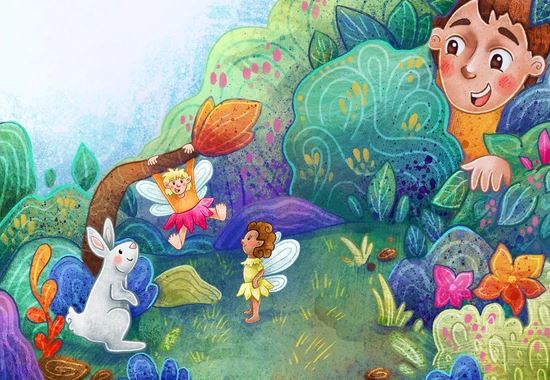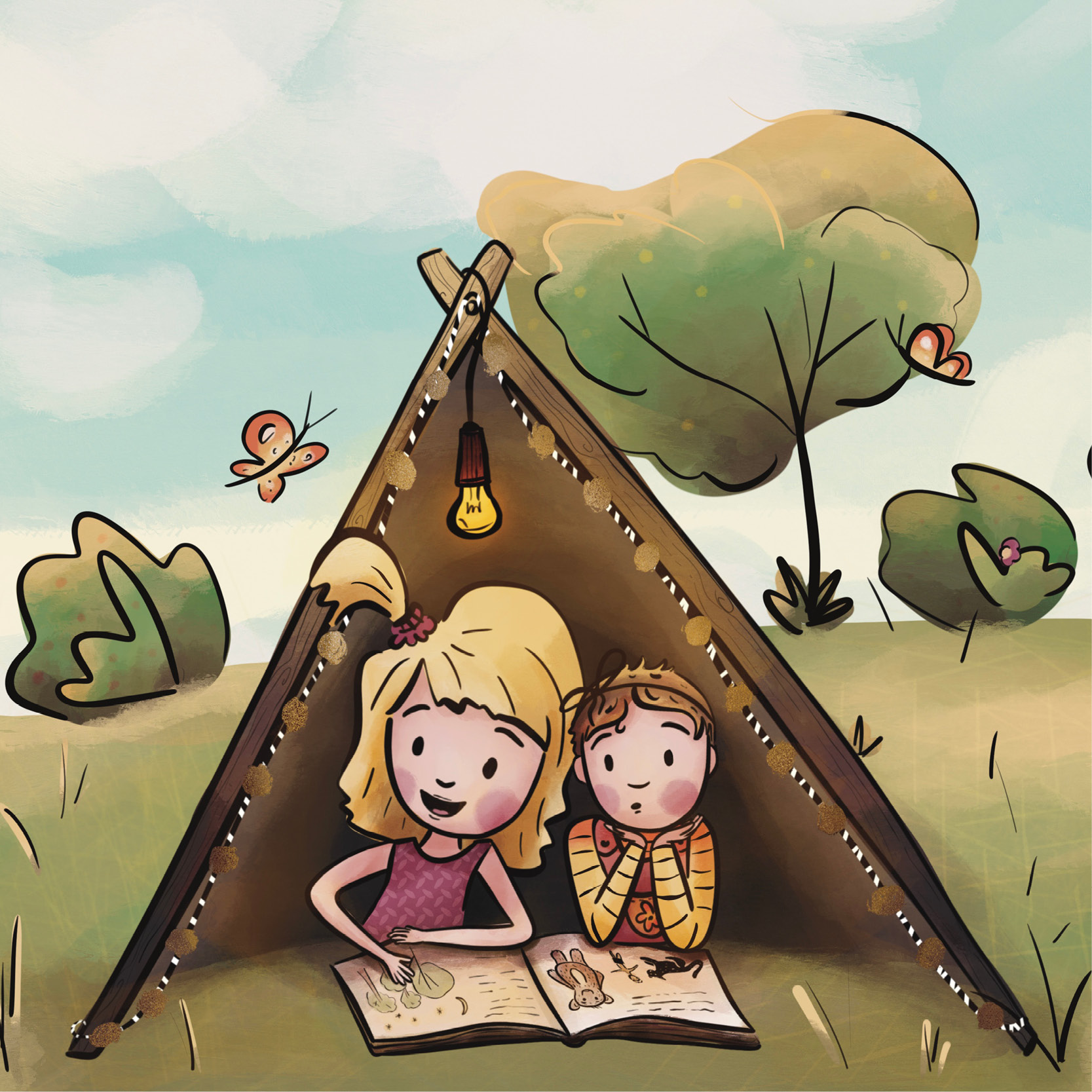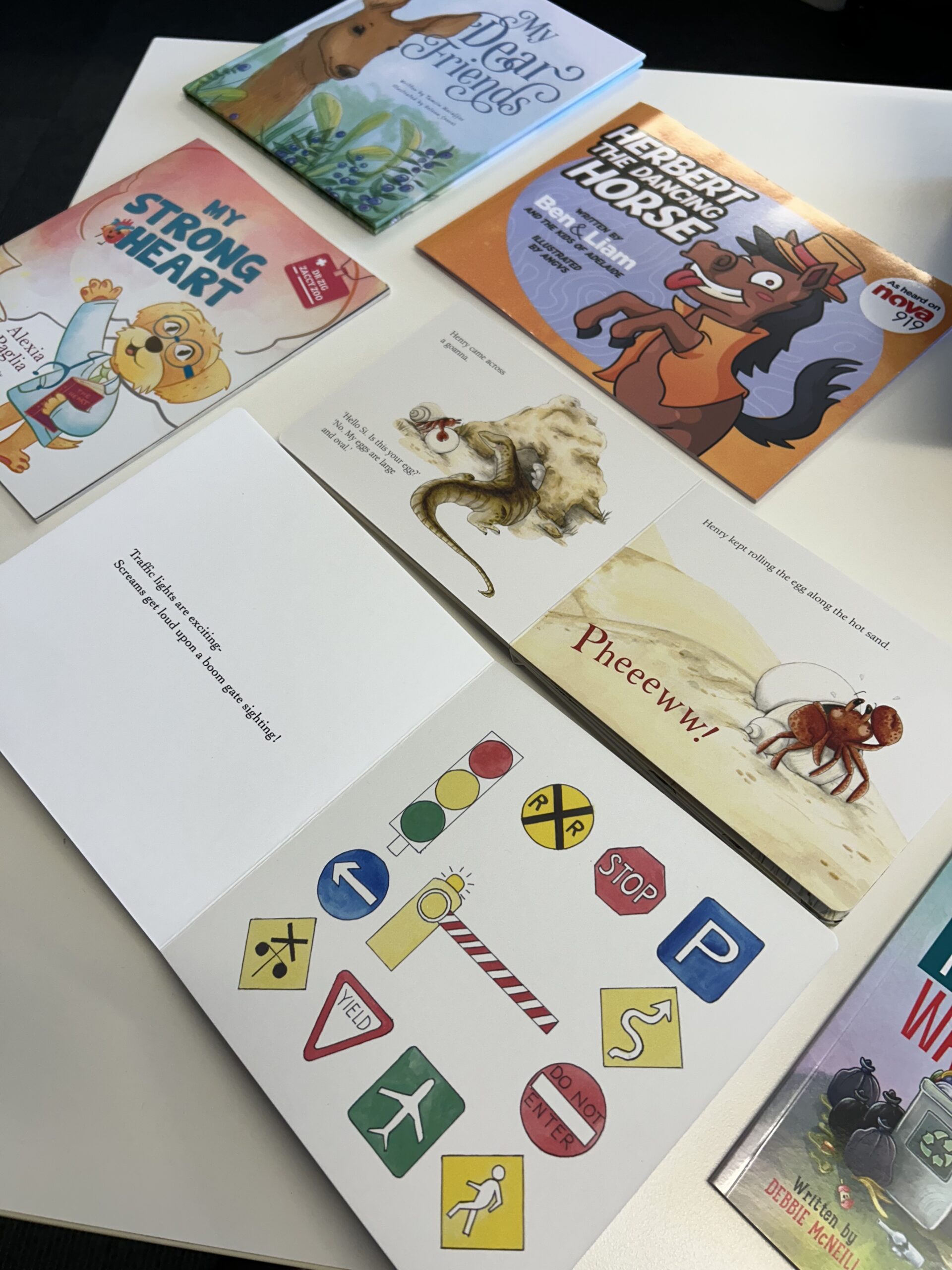No Results Found
The page you requested could not be found. Try refining your search, or use the navigation above to locate the post.

Choosing the right book format for your child is as crucial as selecting the right book itself. Whether you want to foster a love of reading in your child, engage students as a teacher, or attract young readers as a self-published author, the format plays a significant role. Different age groups have unique needs regarding books, and picking the appropriate format can greatly enhance the reading experience.
If you have a toddler at home, you know how much they love to explore their world with all their senses. That’s where board books become essential. Designed for little hands, these sturdy books suit young readers perfectly and are ideal for early childhood development. They can engage toddlers and encourage a love for reading from an early age.
Board books offer high durability, making them perfect for babies and toddlers who may not handle their belongings gently. They’re easy to grip and feature thick pages that little ones can turn easily. Ideal for early childhood reading, board books nurture a love of literature from a young age while withstanding the wear and tear of daily use.
When selecting the perfect board book for your child, prioritise bright colours and simple, engaging illustrations. Interactive features such as lift-the-flap designs and textured surfaces keep your little one entertained, but can be expensive to print, so consider your budget ahead of time. Additionally, books with repetitive text and rhymes not only captivate young readers but also support language development.
As children grow, their reading needs evolve significantly. For preschoolers just beginning to grasp the concept of stories, picture books serve as an ideal choice. These engaging books can start to have more in-depth narratives than baby and toddler books, but still need vibrant images to help the child understand the narrative. By incorporating colorful illustrations and simple text, picture books lay a perfect foundation for early literacy development.
Picture books blend engaging illustrations and simple text that bring stories to life. These books play a crucial role in helping children enhance their vocabulary, understand story sequencing, and nurture a lifelong love for storytelling. By reading picture books, kids enjoy tales and at the same time build essential language skills that support their early literacy development.
When creating picture books for children, prioritise vibrant, engaging illustrations and straightforward but interesting storylines. Opt for texts that are short and simple, allowing the colorful images to convey the story and enhance early literacy to foster a love for reading in young readers.
When children enter kindergarten, they become primed for early readers. These specially designed books facilitate the transition from picture books to more text-heavy stories, supporting literacy development without throwing them in the deep end. Early readers play a crucial role in helping young kids enhance their reading skills and build confidence as they explore more complex narratives.
Early readers feature simple sentences and familiar vocabulary which helps children start reading independently. These books often include rhyming words and repetitive phrases, making reading fun and boosting confidence. Engaging stories and relatable language support literacy development in young learners.
When making a book for early readers, opt for large print with ample white space to make the text more approachable. Include illustrations, but keep them secondary to the text to aid comprehension. This approach helps young readers feel confident and engaged as they develop their reading skills.
Once children gain confidence with early readers, they are ready to transition to chapter books. These chapter books feature more text and fewer illustrations, serving as a vital bridge between early reading materials and more advanced novels. This progression helps young readers develop their skills and prepares them for more complex stories. Engaging with chapter books not only enhances literacy but also encourages imagination and critical thinking.
Chapter books play a crucial role in helping young readers build reading stamina and enhance their skills. They offer more complex storylines and characters that prepare children for longer novels. By engaging with chapter books, kids improve their comprehension and become confident readers, setting a strong foundation for their literary journey.
Focus on developing an easy-to-follow storyline with interesting characters. Because young readers have very few illustrations, remember to include ample description of characters, places, and items to engage the reader’s imagination and start developing this important skill.
Middle grade novels, aimed at tweens aged 8–12, serve as perfect gateways for young readers ready to explore more complex themes and engaging storylines. These novels seldom feature illustrations and require much more in the way of plot and characterisation than the previous book types discussed. Middle grade novels provide a substantial reading experience, helping tweens to develop critical reading skills while enjoying captivating narratives.
These novels help tweens enhance critical thinking skills and foster empathy through diverse characters and relatable situations. By presenting various perspectives, they encourage deeper engagement with literature, making reading a more enriching experience for young readers.
When writing books for tweens, focus on stories that feature strong, relatable characters and engaging plots that promote critical thinking and personal growth. Don’t be afraid to write a plot twist or two! Select age-appropriate themes that address real-life challenges a child of this age bracket may encounter (even if fantastical!).
The page you requested could not be found. Try refining your search, or use the navigation above to locate the post.
The page you requested could not be found. Try refining your search, or use the navigation above to locate the post.
In just a quick 8,000 words, this little book will equip you with the knowledge you need to successfully publish your book.
The Little Book of Big Publishing tips goes into the essentials of self-publishing a book, outlining the business and financial side of publishing, legal issues, design, editing, sales and marketing. There's even a section on how to identify a vanity-publishing scam.


Illustrating a children’s book can be an exciting and rewarding undertaking, but it comes with some challenges. Effective children’s illustrations are not only charming and visually captivating, but also consistent with one another while interacting with and adding to the story.
If you go to a store and look through children’s book section you’ll see a variety of styles and tones. Some may be similar to each other, but all have their own take on the style that is uniquely theirs. When illustrating your children’s book, you need to decide and develop your own style.
One important factor in deciding your style is figuring out what medium you’re most comfortable working in. The first choice you need to make is whether you’ll be creating your illustrations digitally or through traditional means.
To digitally illustrate your book, you’ll first need the hardware and software to do this.
The advantage of illustrating digitally is that you can draw in layers and easily alter and re-do your pieces. You can also be sure that, if your artboards are set up properly, your illustrations will translate over well to print.
Conversely, the disadvantages may be the start-up cost and learning curve for illustrators who don’t already have the equipment and experience with digital mediums.
Hardware can include:
Deciding on which hardware best suits your purposes can be either personal preference or based on your finances. If you’re unlikely to use a dedicated drawing tablet again, it may be best to get an Android tablet or an Apple iPad which has many functions. If you’re wanting to really get into illustration or other digital art, then I’d strongly recommend doing your research and deciding on what hardware you’d prefer to specialise in.
Once your hardware is decided, you need to look into software. If you have an Android tablet, there are many different software options including Krita, Infinite Painter, Sketchbook, and more. For Apple iPad users, the most popular is Procreate, but there are others like Inspire Pro, ArtRage, Clip Studio Paint Ex, and more. Using a tablet with your PC the software options include Krita, Artweaver, Sketchbook Pro, Clip Studio Paint, and many more. Each vary in price and functions. It really depends on your personal preference and what you feel complements your style most.
There are so many options regarding traditional mediums. By “traditional medium” I mean physical, tangible mediums. This would include things like pencils, pastels, paints, crayons, and even felting and paper-craft. Illustrations created using traditional mediums will need to be scanned at a high quality and likely even edited in software such as Adobe Photoshop to make sure that they keep their original quality.
Deciding on which traditional medium you’ll choose is personal to what you’re comfortable with and your skill level.
The advantages of traditional medium that it is more accessible for most beginner illustrators as many of us would already have experience with one or more of these mediums. Also, it can be cheaper to purchase the materials needed in comparison to digital illustration equipment.
Digital



Traditional



To ensure that your characters look consistent and that your illustrations look professional, it’s a good idea to practice illustrating you characters beforehand. If your characters don’t look similar in each of their illustrations, it can look messy or be confusing for the children reading the book, effecting their reading experience.
A good exercise when practicing your characters’ illustrations is to draw them from different angles, with different expressions, and in different poses. It doesn’t matter if you don’t think you’ll use this in your book: what you’re looking for is consistency of style and a character who believably looks like the same person no matter what they’re doing. Be sure to use your preferred medium, whether that is traditional or digital, to ensure that all of your practise pays off and that you won’t have to restart all of your work on another medium.

One of the guiding principles of children’s illustrations is the idea of every element adding to the narrative in its own way. A common error of children’s books is that the text and illustrations don’t add to one another to build the narrative together, rather they just repeat each other.
For example, compare how the following paragraphs interact with the illustration to create a story:
The illustration:

Repeating the content:
Greg and his friend Penny the mystical woodpecker wanted to grow an apple tree from the core of the apple they’d eaten, so they went down by the river to dig a hole in the ground with their trowel to plant it.
Around them were colourful leaves and little white flowers all over the green grass.
Adding to the narrative:
Penny had a wonderful idea. ‘I know what we should do, Greg. Let’s plant our apple core and see if it turns into a tree!’
They searched the park and came across the perfect spot: a grove filled with all different kinds of enchanted trees.
‘Maybe if we plant our apple here, it will give us magical apples!’ Penny exclaimed.
‘What is a magical apple?’ Greg asks.
Penny thinks for a moment. ‘I’m not sure. Let’s find out!’
Remember: when illustrating a children’s book, your pictures should complement the text, not simply duplicate it. Repetition can be boring to read and take away from the impact of the illustrations.
A storyboard is a series of basic sketches that give an idea on the layout or elements for each illustration within your children’s book. It is a helpful tool when visualising what your book will look like and what elements you want in the illustrations before committing to the final illustrations. By mapping out your pages, you can play with different layouts and ideas to see what works best for your book.
Storyboarding is also important when considering your text, too. There needs to be a balance between illustrations and text. Do you want the text to be on the same page as the illustration? If so, then you’ll need to be sure to leave enough room for your text to fit, otherwise it may clash with the illustration and become hard to read. Alternatively, will your text be on its own page with the illustration on the page next to it? You may need to consider adding some interest to the text in that case, maybe some colour or a decorative font.
If illustrating your own children’s picture book becomes too daunting or your illustrations aren’t coming up as you’d like, then hiring an illustrator could be the way to go. Professional children’s book illustrators possess the skills, creativity, and experience that will help your book come to life. There are many children’s book illustrators out there with numerous styles to choose from. Illustrators can work off your storyboard too, creating a collaborative relationship between the two of you throughout the project and help make sure you are both on the same page.
Hiring a professional illustrator will help guarantee a quality product, ensuring that your book will stand out among its competitors in the market. At the end of the day, if your illustrations look amateur or inconsistent, it can reflect poorly on your book regardless of the quality or importance of the story. So, hiring an illustrator can be extremely beneficial for children’s book authors in the long run.
Green Hill works with a number of children’s book illustrators who are experienced at working with self-published authors. We’ve cultivated a portfolio of children’s book illustrators with a variety of styles of budget options to choose from to help ensure there is an illustrator for each author.
The page you requested could not be found. Try refining your search, or use the navigation above to locate the post.
The page you requested could not be found. Try refining your search, or use the navigation above to locate the post.
In just a quick 8,000 words, this little book will equip you with the knowledge you need to successfully publish your book.
The Little Book of Big Publishing tips goes into the essentials of self-publishing a book, outlining the business and financial side of publishing, legal issues, design, editing, sales and marketing. There's even a section on how to identify a vanity-publishing scam.


Green Hill is always working to bring our authors the latest opportunities with affordable pricing. Historically, childrens board books were not something we offered as they simply weren’t viable for our authors—but this has changed.
Board books are a sturdy book and are typically produced young audiences of around 0 – 5 years of age. They’re made to be durable and better withstand rough handling, sticky fingers, and anything else that a toddler may subject to them. Board books differ from other types of books because their interior pages are made with a hard board material instead of the typical paper pages that are found in standard paperbacks and casebound books.

An obvious benefit to printing your childrens book as a board book is that they are longer lasting. This means that they have the capacity to be handed down through siblings and families, allowing your book to touch the lives of many little readers.
However, there are also numerous childhood benefits to producing your childrens book as a board book. It has been shown that young children benefit from the ability to interact with their books, and while they may be too rough to handle a standard paper-paged book, they can handle a board book much easier. Reading board books with toddlers is beneficial for parent-child bonding, building mental connections, and developing fine motor skills.
Recently, printing a childrens board book was not a viable option for our self-published childrens book authors; it required printing in bulk of 1,000+ copies at overseas printing companies.
Well, no more! Green Hill Publishing has found the solution.
Our childrens book authors wanting to print their books as board books can now enjoy a short-run printing option just like any other author printing paperback books. This newly available technology allows authors to print very short print runs of their books and still maintain an affordable price! We recommend beginning with runs of 200 – 500 copies of your book.
The page you requested could not be found. Try refining your search, or use the navigation above to locate the post.
The page you requested could not be found. Try refining your search, or use the navigation above to locate the post.
In just a quick 8,000 words, this little book will equip you with the knowledge you need to successfully publish your book.
The Little Book of Big Publishing tips goes into the essentials of self-publishing a book, outlining the business and financial side of publishing, legal issues, design, editing, sales and marketing. There's even a section on how to identify a vanity-publishing scam.
